Back in 2009, I took a leap of faith and my first blog. This decision became one of my most rewarding, How to start a blog: propelling my career as an expert in my field. It has also provided me with the unique opportunity to connect with an audience eager for knowledge. If you’re thinking about how to start a blog, you’re in for a treat! It’s a fantastic way to share your passions, establish yourself as a thought leader, and even generate leads for your business.
Have you ever found yourself daydreaming about…
- Breaking free from the 9-5 grind, leaving behind those drab offices, monotonous spreadsheets, and endless meetings?
- Creating additional income to support your family without sacrificing those precious evenings and weekends with your loved ones?
- Launching a business where you call the shots — no bosses, just you enjoying your freedom?
- Engaging in work that truly matters to you, merging your passions with a paycheck?
- Exploring the world, working in breathtaking locations while setting your own schedule?
If any of these thoughts resonate with you, then we’re definitely on the same wavelength! Believe me, I’ve been there too!
For those who are new to my blog, let me take a moment to share a bit about myself and the journey that has brought me to this point…
Hey there! My name is Nancy.
I’m a mother, wife, and I’m from Lares, Puerto Rico. I currently reside in Atlanta, GA.

I began my blogging journey in 2009, inspired by a tumultuous period in my life. After losing my home during the 2007 recession, going through foreclosure, and filing for bankruptcy, I hit rock bottom. In my quest to find ways to make money online and save my home, I discovered the world of blogging.
Though I lost everything and faced incredible challenges, I fell in love with digital marketing and blogging. At that time, I was juggling a job at Bally Total Fitness in Chicago while attending DePaul University full-time. After losing my job along with everything else, I decided to start my blog.
It took me years to start generating income from blogging because I was the type of person who made every mistake in the book before finally figuring things out. Yet, through consistent effort, investing in numerous blogging courses, and learning from my missteps, I transformed my blog into a full-time career, earning six figures.
Over the past 15 years, I’ve built multiple blogs, some of which I’ve flipped and sold for a profit. Blogging has truly changed my life, and I believe it can change yours too.
I wanted to share my story to show you that you might be in a similar situation—or even in a better position than I was when I started.
If you’ve read this far, it tells me you’re ready to launch a blog that allows you to work from home, earn a good income, and live life to the fullest.
The great news is you can start a brand new blog and get hosting with Bluehost for less than $2.95/month, all without having to hire a programmer, learn code, or spend endless hours glued to your computer screen.
It’s much easier than you might think!
This blog post is all about how to start a blog.
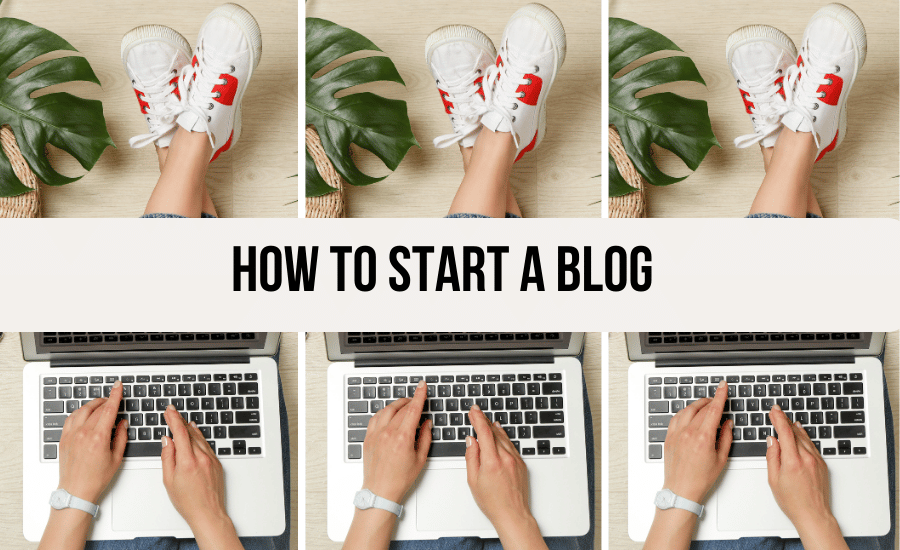
Home > Blogging > How To Start A Blog
DISCLOSURE: This is not a sponsored post. However, through my affiliate links, I may receive a commission if you decide to make a purchase, at no additional cost to you! Check out our disclaimer for more info on how it works
Table of contents
- Is It Truly Possible To Earn Money From A Blog?
- Why You Should Consider Starting a Blog
- Choosing the Right Blogging Platform
- How To Start a Blog: A Step-by-Step Guide
- How To Start A Blog (A Step-by-Step Guide)
- How to Login to WordPress Dashboard Through Bluehost Account Manager + WP Dashboard
- Familiarize Yourself with WordPress
- Writing and Publishing High-Quality Content
- Conclusion
Is It Truly Possible To Earn Money From A Blog?
Before we dive into the tutorial on starting your first blog, I want to share some screenshots of the money I’ve actually made from my blog.
You might be wondering if it’s truly possible to generate income through blogging. Seeing real results can serve as an inspiration and give you a clearer picture of what’s achievable.
Perhaps you’ve started a blog before and gave up because you found it challenging to make any money. Or maybe you think starting a blog is just a scam and that it doesn’t really work.
Skepticism can be healthy. In a world where everyone seems to over-promise how you can make a fortune by working only a couple of hours a day, it’s wise to approach things with a bit of caution.
Making money through blogging requires a significant amount of persistence; you have to treat it like a legitimate business. It’s not something that happens overnight.
That said, making money with a blog is absolutely possible. I’ve personally been earning a six-figure income from my blog for years now.
To motivate you, here are some screenshots of my earnings.
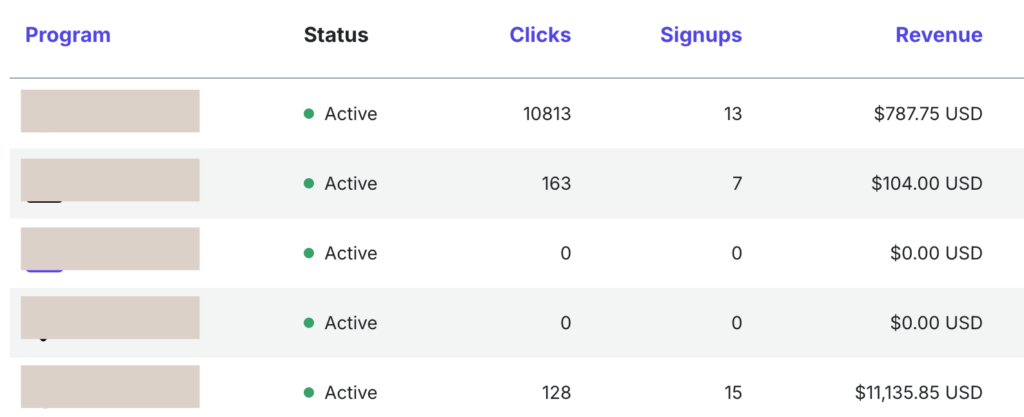




I’m part of over 25 affiliate groups—this is just a small taste of how my blog helps me earn money every month. I hope this motivates you to achieve similar results as well.
Why You Should Consider Starting a Blog
The internet has revolutionized how we consume and share information. Blogs have emerged as powerful platforms for individuals and businesses to communicate with their audiences. Unlike social media, which can feel fleeting and overcrowded, blogs offer a dedicated space to explore topics in-depth. You can shape the narrative and cultivate a community around your unique perspective.
Here are some common reasons or objections that many people have for not starting a blog:
1. Fear of Failure
Worries about the blog not succeeding or falling short of expectations can create a significant barrier to starting. This fear often leads to hesitation, as potential bloggers doubt their ability to achieve the results they desire.
2. Lack of Time
Many aspiring bloggers feel overwhelmed by existing commitments and struggle to carve out time for blogging. This perception of a busy schedule can prevent them from taking the first steps toward creating their blog.
3. Uncertainty About Content
Not knowing what to write about or how to identify a niche can lead to indecision. This uncertainty can stifle creativity and make it challenging to get started, leaving potential bloggers feeling lost.
4. Self-Doubt
Overthinking personal skills in writing, editing, or content creation can foster self-doubt. This lack of confidence often stops individuals from pursuing their blogging ambitions, as they may feel inadequate compared to others in the space.
Acknowledging these reasons can help you address concerns and reevaluate your desire to start a blog!
Don’t allow your fears to stand in the way of creating your fantastic blog and a bright future!
Choosing the Right Blogging Platform
One of my main issues with other blogs is that they often don’t evolve with you. Many platforms come with limitations, restricting your ability to customize or run ads effectively.
Diving into the world of blogging requires thoughtful consideration of various factors. Begin by selecting the right platform that suits your needs. For experienced bloggers, WordPress.org is a standout choice, offering exceptional flexibility and customization options. (I highly recommend starting with WordPress.org)
However, if you’re just starting and prefer a simpler approach, consider user-friendly alternatives like Wix, Squarespace, or Blogger. It’s important to assess your technical skills and long-term goals before making a decision on a platform. This is a crucial first step in your blogging journey.
How To Start a Blog: A Step-by-Step Guide
Starting a blog might seem intimidating initially, but it’s more straightforward than you think. This step-by-step guide will help you navigate the process seamlessly. It covers everything from choosing a domain name to publishing compelling content. Learning how to start a blog is more achievable than you think.
1. Defining Your Niche
What are you passionate about? What knowledge or skills do you possess that could benefit others? Answering these questions helps pinpoint your niche, the core theme that will drive your blog content.
Whether it’s sustainable living, digital marketing, or gluten-free baking, a specific area of focus will attract a targeted audience. Choosing a niche also allows you to tailor your content effectively, ensuring it resonates with the right people. This is one of the most crucial aspects of learning how to start a blog.
As long as you’re passionate about a topic and can effectively solve problems for your audience, you can turn your blog into a source of income. The key is to find a niche that not only excites you but also meets the needs of your readers.
Here are some of my favorite profitable blogging niches:
- Personal Finance
- Tips on budgeting, saving, investing, and managing debt.
- Health and Wellness
- Topics related to nutrition, fitness, mental health, and overall well-being.
- Travel
- Sharing travel tips, destination guides, and personal travel experiences.
- Lifestyle
- Covering areas like home décor, crafts, organization, and daily routines.
- Parenting
- Insights on raising children, family activities, and educational resources.
- Technology
- Reviews, tutorials, and tips on the latest gadgets and software.
- Food and Cooking
- Recipes, cooking techniques, and culinary trends.
- Self-Improvement
- Strategies for personal development, productivity, and motivation.
- Beauty and Fashion
- Tips on skincare, makeup, and fashion trends.
- Digital Marketing and Blogging
- Sharing expertise on how to grow online presence and monetizing blogs.
Remember, the most successful blogs often stem from unique perspectives in these niches. By identifying what you’re passionate about and how it aligns with the interests of your audience, you can establish a successful blogging venture that generates income.
2. Choosing Your Domain Name
Your domain name acts as your blog’s digital address. It’s the web address people type into their browser to reach your site, such as “yourblogname.com”. Choosing a relevant, memorable, and brand-aligned domain name is essential. This establishes online credibility and searchability from the get-go.
Opt for a clear and concise domain name that reflects your niche. This approach helps potential readers quickly understand your blog. For example, if your blog centers around healthy recipes for busy professionals, consider incorporating keywords into your domain name. Words like “healthy,” “recipes,” or “busy professionals” can make a big difference.
If you sign-up with Bluehost they are offering a free domain for the first year. Learn more here!
3. Selecting a Reliable Web Host
A web hosting provider gives your blog a place to live on the internet. Selecting a reliable web hosting provider ensures your site’s stability, speed, and security. A slow or frequently down website can negatively impact user experience.
This could potentially hurt your rankings on Google, leading to lost traffic and visibility. If you aren’t sure how to choose one, many website building platforms include hosting as part of their paid plans.
The great thing about signing up with BlueHost is that you get a free domain for the first year when you choose their web hosting services. Click here to view their hosting plans!
4. Designing an Engaging Blog Layout
The visual appeal of your blog is just as important as its content. The overall design and layout contribute to user experience. Visitors are more likely to stick around and engage if it’s visually appealing and easy to navigate.
Opt for a visually pleasing, easy-to-navigate theme or template. Make sure the layout is clean, organized, and complements your niche. Choose fonts that are easy to read. Above all else, make sure your design is responsive. In other words, ensure that it adapts seamlessly to any screen size, providing an optimal experience for visitors using desktop computers, tablets, and mobile devices.
I highly recommend exploring ThemeForest for a wide selection of stunning theme templates. They offer great designs at reasonable prices, and you can even pay a little extra to have someone set them up for you.

Let’s go over the steps one more time!
- First, you need a content management system—I highly recommend choosing WordPress.org.
- Next, you need to select a .com domain and reliable hosting for your blog; I recommend BlueHost.
The best part is that you can start your own blog, get a free domain, and enjoy reliable hosting with BlueHost for a low price. Click here to get started!
Here’s why you need to start with WordPress.org instead of WordPress.com:
- Full Control:
- WordPress.org offers complete control over your website.
- You can customize your site fully with themes, plugins, and unlimited options without restrictions.
- Monetization Freedom:
- With WordPress.org, you can easily monetize your blog with ads, affiliate links, or selling products.
- WordPress.com has limitations on how you can earn money until you upgrade to a premium plan.
- Flexibility of Hosting:
- Choosing your own hosting provider allows you to scale your website as you grow.
- You can select a plan that fits your budget and needs, providing better performance and support.
- No Plugin Restrictions:
- On WordPress.org, you can take advantage of thousands of plugins to enhance functionality.
- WordPress.com restricts you to a limited set of plugins on free or lower-tier plans.
- SEO Optimization:
- Full control over SEO settings on your own site can substantially improve search engine visibility.
- On WordPress.com, your SEO capabilities are limited without paying for a premium upgrade.
- Ownership of Content:
- With WordPress.org, you truly own your content and website.
- If you decide to move from WordPress.com, you may face challenges exporting your content.
- Investment in Your Future:
- Starting with a free WordPress.com blog may seem attractive, but upgrades and limitations can quickly pile up.
- Investing in WordPress.org with proper hosting upfront is more cost-effective and worth your time in the long run.
In summary, if you’re serious about blogging and want to build a strong online presence, investing in WordPress.org is a wise choice. It provides the tools and flexibility needed to grow and succeed, ensuring that your time and effort are not wasted on an inferior platform.
And you’re paying a small hosting fee with BlueHost, and it’s well worth it!
How To Start A Blog (A Step-by-Step Guide)
- Check out Bluehost HERE and follow the instructions provided below!
- Scroll down and choose your hosting plan.
For now, the basic plan is ideal.
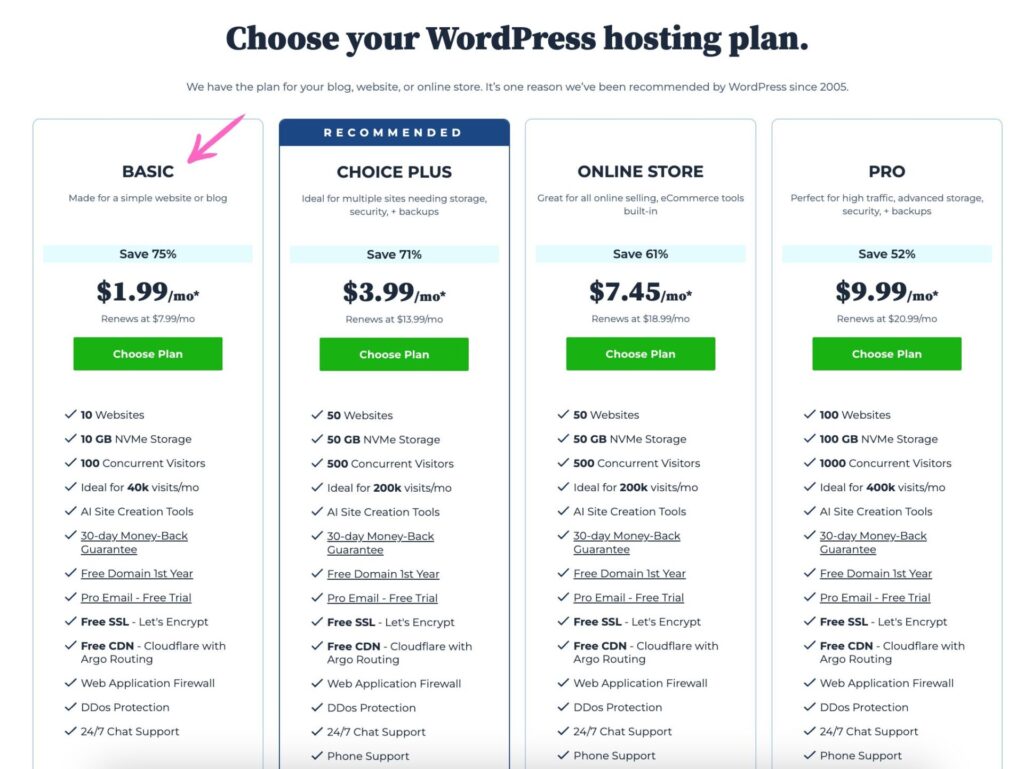
3. Set up a “New Domain” or register an “Existing Domain” if you already have a URL

The domain is the name and address of your blog.
For instance, my website is Nancy Badillo, and my domain is nancybadillo.com.
I purchased this domain, and now I own it.
With Bluehost, you get a free domain for the first year, which is an amazing deal.
To check for availability, simply enter your desired domain name into the box and click “Search.” If it’s available, you’ll see a “successful” message, allowing you to move on to the next step. If the domain is already taken, you’ll need to select a different name for your blog.
4. Alright, it’s time to set up your new Bluehost account. Choose your package information.
The WordPress basic hosting plan allows you to choose how long you want to pay for hosting, with options of up to 1 year or 3 years. You’ll not have a charge for the domain since you get it free for the first year.

- After you choose your package, continue to complete the checkout page by entering your contact information, creating a password, and paying for the hosting plan.

Now that we have taken care of the hosting and domain, the next step is to set up your WordPress.
6. Log in to your Bluehost Account Manager.
Select the Hosting tab from the side navigation menu.
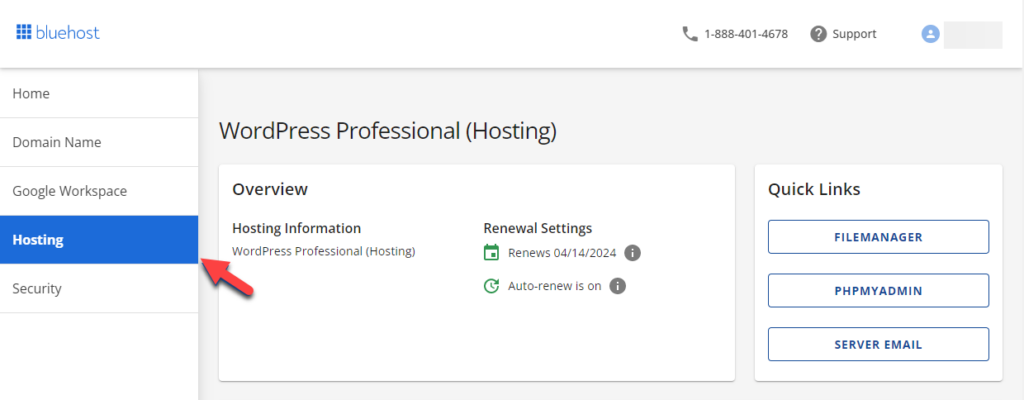
7. Press the Add Site button to set up a new WordPress site.
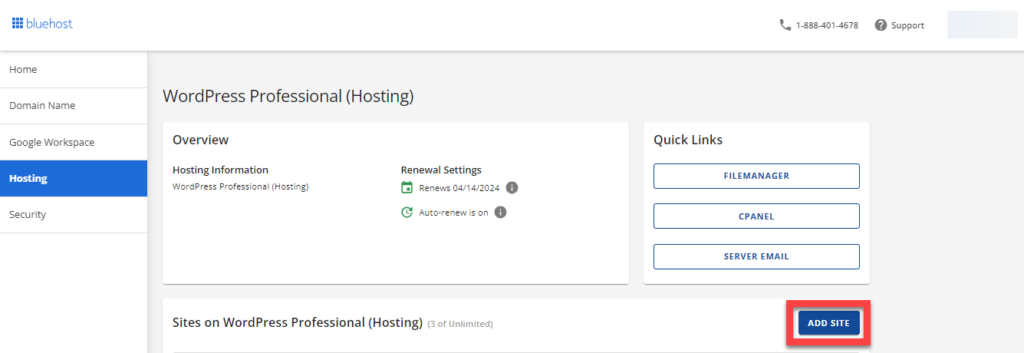
8. Enter your website’s name in the Site Title field and proceed. If you’re uncertain, you can choose Skip for Now.

9. Input your domain name in the Enter Domain Name field or choose Use a Temporary Domain Name. Click Continue to move forward.
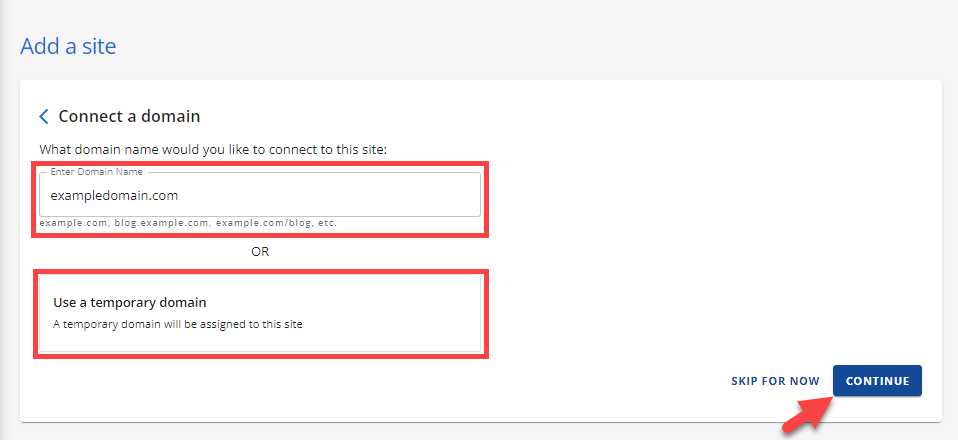
10. Once the process is complete, the installation of your WordPress site will start.
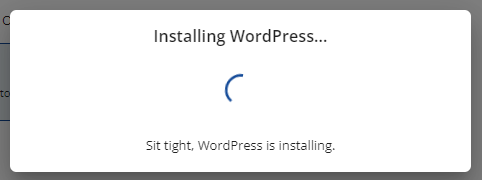
11. To reach your WordPress dashboard, please click on Log into WordPress.
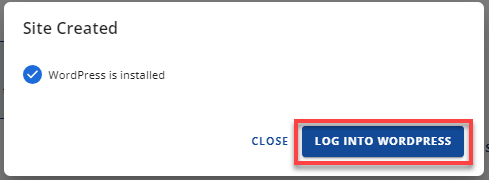
The installation process will take a few minutes. Once it’s done, your application will be installed and ready for use.
Click on the Websites tab in the left navigation menu.
- To manage a specific site, hover over it and click Edit Site.
- To edit your WordPress, go to the upper-right corner of the page and click the Edit WordPress button.
Congratulations, you’re all done! The next step is logging into WP admin choosing your theme and customizing your pages!
How to Login to WordPress Dashboard Through Bluehost Account Manager + WP Dashboard
- Sign in to your Bluehost Account Manager.
- Go to the Websites tab on the left side navigation.
- Hover over the website you’re working on, then click the Edit Site button to access the WordPress site.
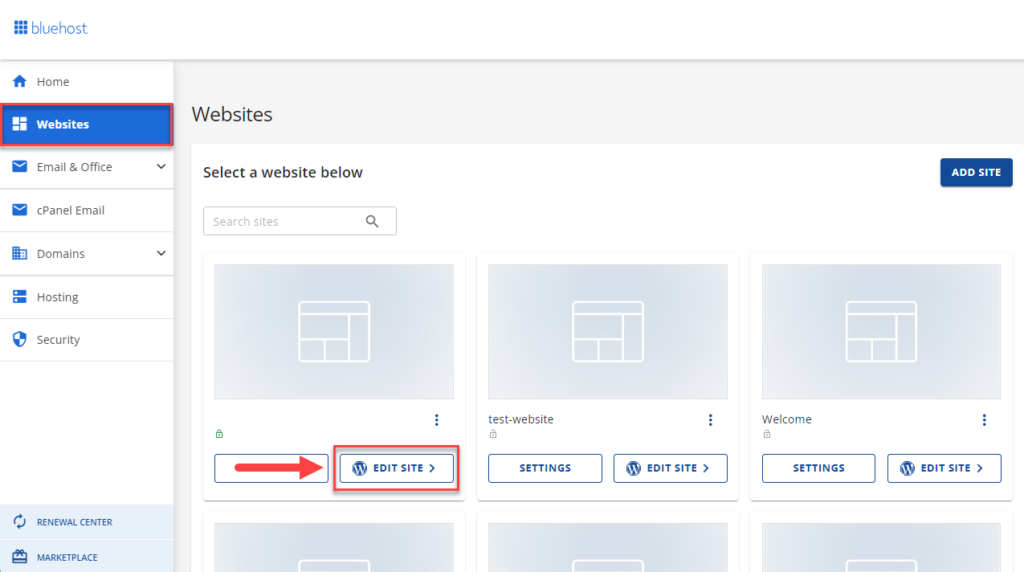
4. You are now logged in to your WordPress website.
Another way to access the backend of your blog is logging to WordPress dashboard directly.
The default URL to log in to your WordPress dashboard is the same as your site’s URL, with “/wp-admin” added at the end. For instance, if my WordPress website is www.example.com, I would go to www.example.com/wp-admin to reach the login screen.

Familiarize Yourself with WordPress
If you have made it this far in your blogging journey, you should be incredibly proud! You’ve invested time and effort into learning the art of blogging, and it’s time to take your skills to the next level by diving into one of the most powerful tools available: WordPress.
WordPress is a versatile blogging platform that offers everything you need to create, manage, and design your blog. Whether you’re focusing on content creation, optimizing for search engines (SEO), or enhancing the visual appeal of your site, WordPress has the tools to help you succeed. You’ll be spending a LOT of time in this platform, so it’s vital to familiarize yourself with its features. As you navigate WordPress, you will discover just how user-friendly and robust it is for bloggers of all experience levels.
Key Features of WordPress
In this section, I’ll guide you through some of the most important features of WordPress that will allow you to craft compelling blog posts. One of the core components is the Post.
What is a Post?
A post in WordPress is a piece of content that you publish on your blog. It’s a dynamic entry that can engage your audience through stories, information, tutorials, or other types of writing. Posts usually appear in reverse chronological order on your blog, making it easy for your audience to see the latest content. Each post can also be categorized and tagged to enhance organization and improve navigability for readers.
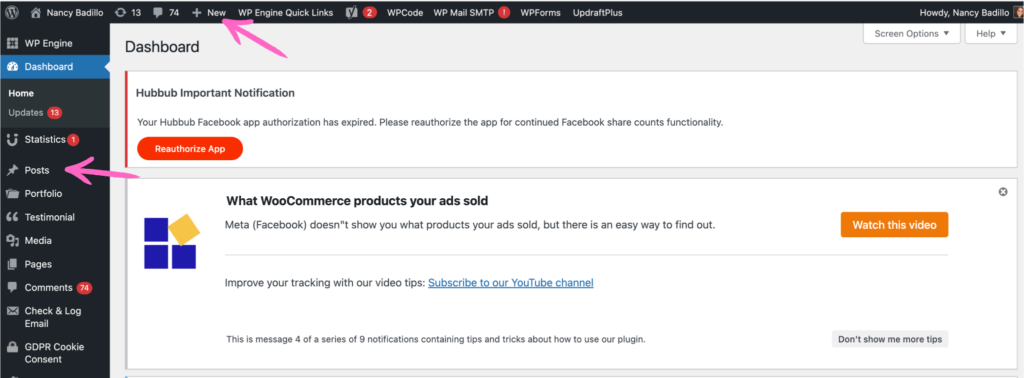
Step-by-Step Directions to Create a Post in WordPress
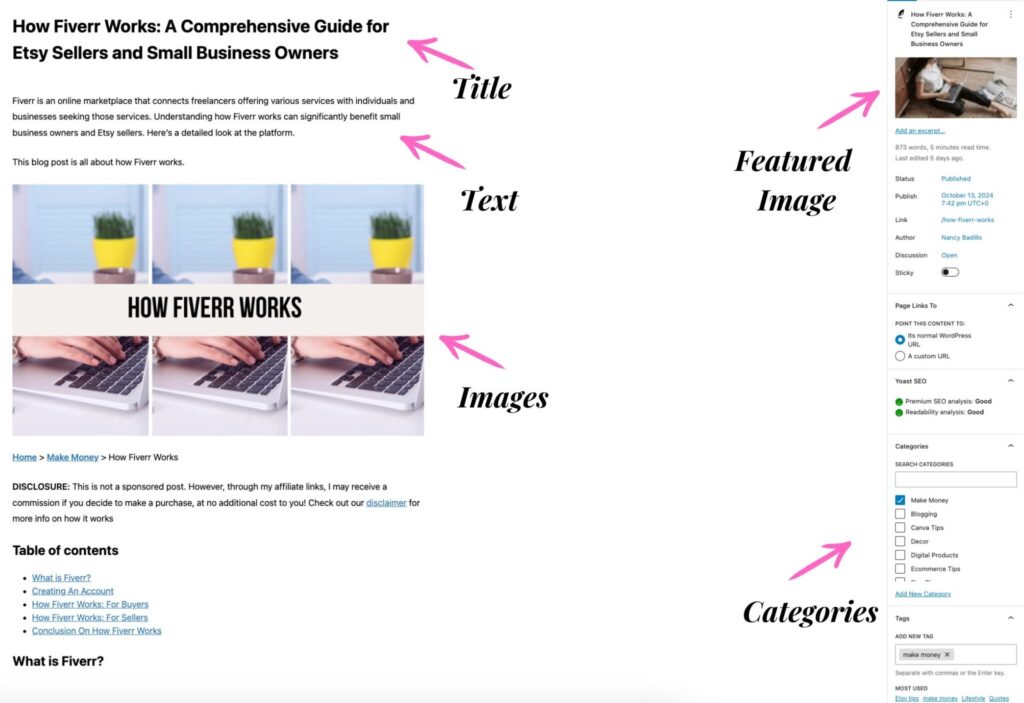
- Log into Your WordPress Dashboard:
- Open your web browser and type in your blog URL, adding
/wp-adminto the end. For example,www.yourblog.com/wp-admin. Enter your username and password to log in.
- Open your web browser and type in your blog URL, adding
- Navigate to the Posts Section:
- On the left-hand menu, click on “Posts.” This will take you to the main area where you can view existing posts, draft new content, and manage your post categories.
- Add a New Post:
- Click on the “Add New” button, located at the top of the Posts page. This action will open the WordPress editor where you can start crafting your blog post.
- Craft Your Post:
- Title: Begin by entering a captivating title for your post. This should grab attention and give readers an idea of what to expect.
- Text: In the main content area, you can write or paste your post content. Utilize headings, bullet points, and short paragraphs for better readability.
- Images: Click on the “Add Media” button to upload and insert images that support your post. Visuals can enhance the reader’s experience and engagement.
- Categories: On the right-hand side, you can select or create categories to organize your post. Choose relevant categories that define the content of your post to help readers find related material.
- Featured Image: This image represents your post in previews and on social media. Click on “Set Featured Image” to upload an image that visually highlights your content.
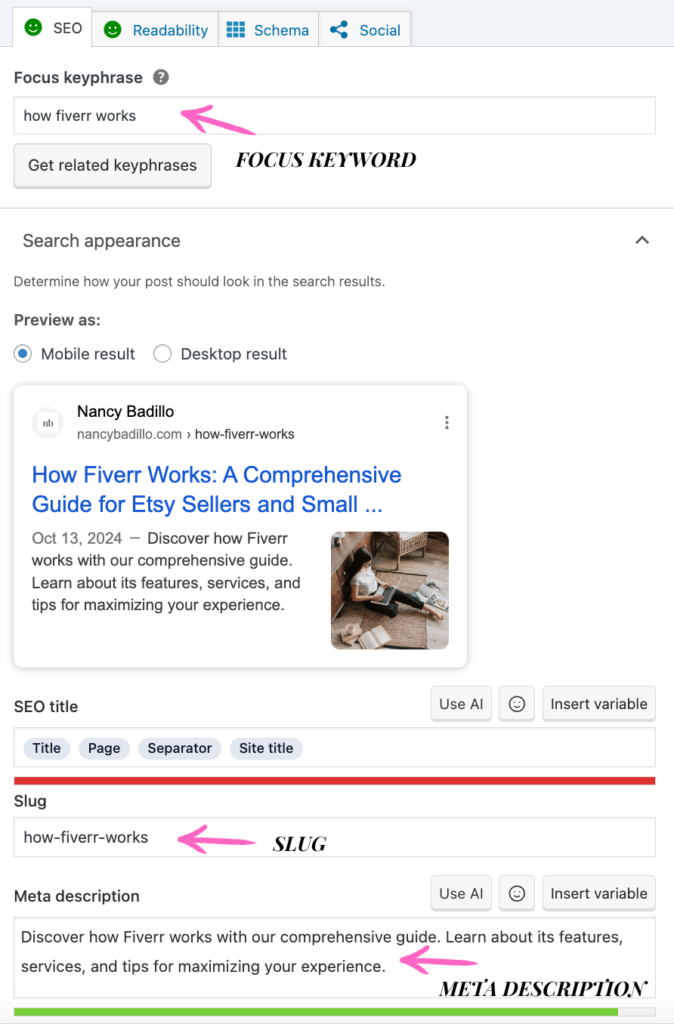
- Slug: Right below the title, you’ll see the URL slug. It’s important for SEO; a catchy and relevant slug helps readers and search engines understand your content theme.
- Meta Description: In the SEO plugin section (e.g., Yoast SEO), write a concise meta description that summarizes your post. This is crucial for search engines to display your work correctly in search results.
- Focus Keyword: Choose a focus keyword or phrase that encapsulates the essence of your post. This will help with SEO and ensure your content reaches its intended audience.
Conclusion
WordPress is a powerful ally in your blogging journey, and mastering its features will elevate the way you create and manage your content. By understanding how to craft your posts effectively and navigate the platform, you’re laying the foundation for a successful and rewarding blogging experience.
Continue to experiment and explore all that WordPress has to offer—you’ll be amazed at how much you can achieve! Continue reading for some bonus tips!
Writing and Publishing High-Quality Content
Content is king in the blogging realm. Now it’s time to bring your ideas to life with high-quality content. Write in your unique voice, infusing your personality into every sentence. Consider these content ideas:
- Tutorials and how-to guides
- Listicles
- Personal stories and experiences
- Industry news and analysis
- Interviews with experts
By consistently providing valuable and engaging content, you’ll attract a loyal readership and establish your blog as a go-to resource in your niche.
Need more help when it comes to writing a blog post. Check out this in-depth article where I share how to write a blog post: a beginner’s guide. The key point is not to get stuck—just learn as you go!
6. Optimizing for SEO
Search Engine Optimization, often called SEO, might sound technical and complex. Still, it’s vital to helping people discover your content through searches. Think of SEO as making your site appealing to Google. When you make your content appealing to search engines, you increase the likelihood of appearing higher on search engine results pages (SERPs).
Keywords play a huge part in SEO. By understanding what people search for and aligning your content with their needs and search patterns, you make your blog more discoverable. There are many free keyword research tools available online to help you determine the phrases people are searching to find information related to your niche.
Here are three free keyword research tools you can use:
- Google Keyword Planner: This tool helps you discover new keywords and see how a list of keywords might perform. It’s especially useful for PPC campaigns but can also aid in SEO.
- Ubersuggest: Created by Neil Patel, Ubersuggest provides keyword suggestions, search volume data, and competition analysis. It’s user-friendly and offers insights for both organic and paid search.
- AnswerThePublic: This tool visualizes search questions and suggested queries related to your keywords. It’s great for discovering content ideas based on what people are searching for.
I absolutely love RANKIQ! This tool is a game-changer for writing blog posts that rank on the first page of Google. It provides clear guidance on what to include in your content and titles, allowing you to create perfectly optimized posts in half the time. It’s a lifesaver for anyone looking to save time and streamline their writing process. Click here to watch the video on how it works!
Conclusion
Learning how to start a blog can feel both exciting and overwhelming. Understanding the process and approaching it strategically sets the foundation for a rewarding venture. From defining your niche to optimizing for search engines, every step contributes to your blog’s success.
If you enjoyed this post, let me know by leaving a comment below!
Happy Blogging!
Xo,
Nancy
MORE RELATED POSTS:
- How to Use Instagram to Grow Your Blog Effectively
- Boost Your Blog’s Appeal with the Perfect Blog Icon
- How To Start A Blog – Your Step-by-Step Blueprint!
- Avoiding Amateur Blog Mistakes: 10 Tips to Thrive
- How To Write a Blog Post: A Beginner’s Guide
📌 Did you find this post helpful and inspiring? Want to come back to it later? Save THIS PIN to reference later!
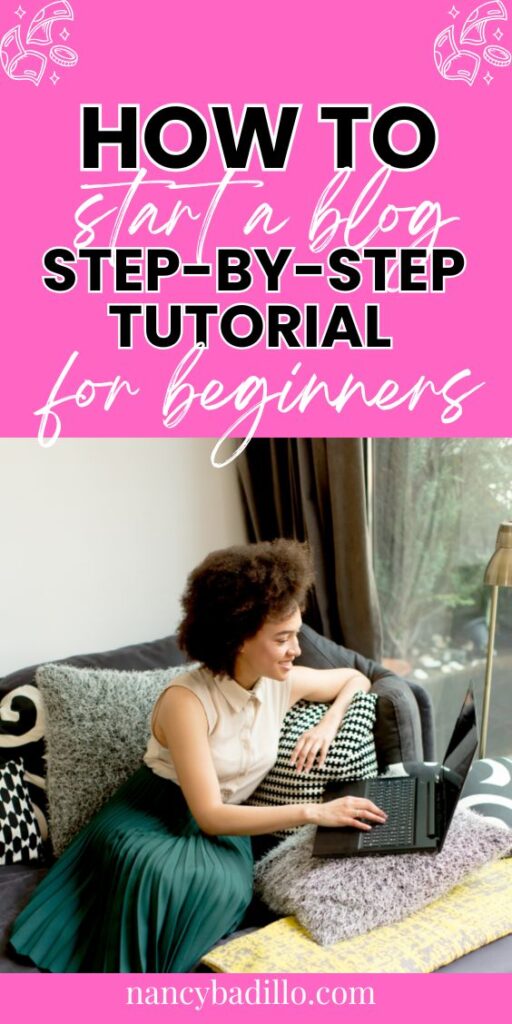

+ show Comments
- Hide Comments
add a comment